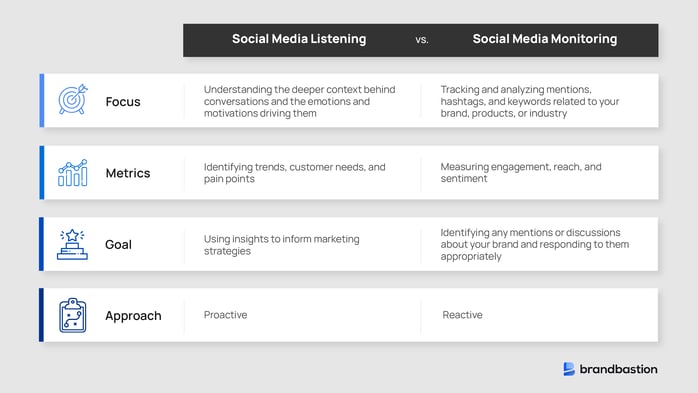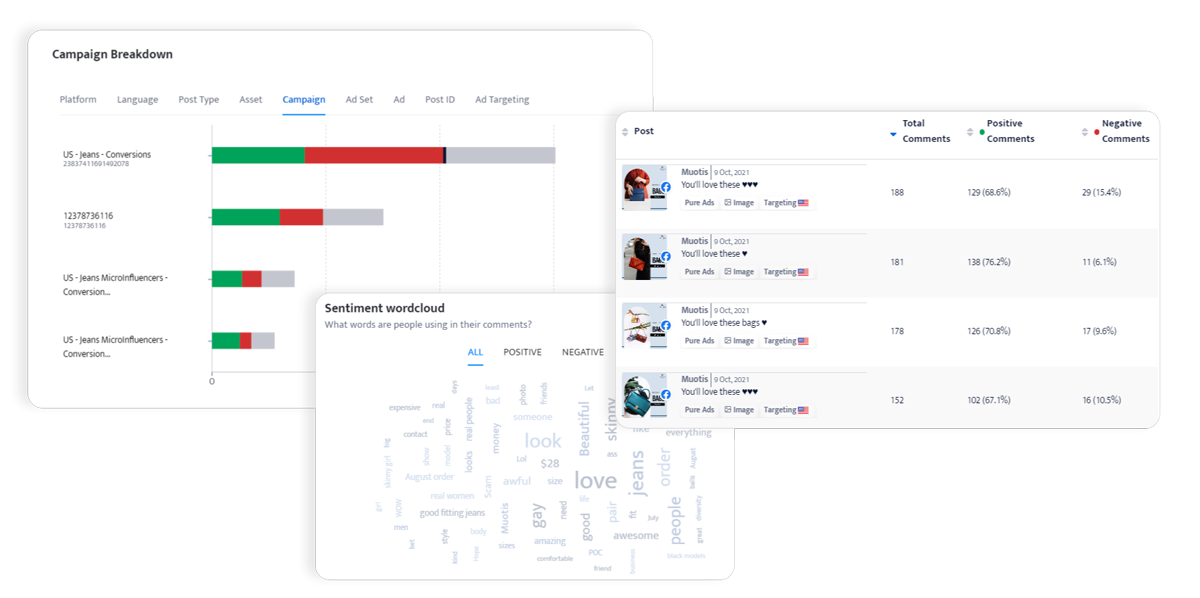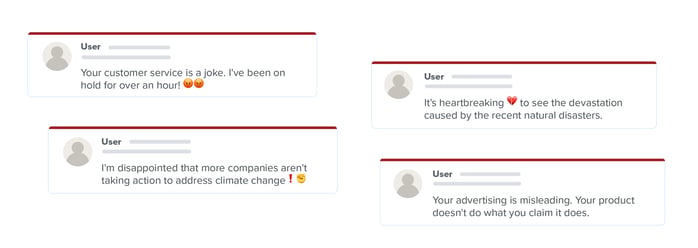
Social Media Listening: What is it?
Nearly half of the world's population is using social media today. To cut through all the noise, you must truly understand your audience. What do they want? How do they feel? And, most importantly – why. This is where social listening comes in. It's all about getting insights into why people feel and react the way they do. In this article, you'll learn more about what social media listening is and how to use it to your advantage.
What is social media listening?
Social media listening is about analyzing what is being said on social media platforms. This process is mainly used to understand what people think and feel about a product, service, brand, topic, or keyword. As a result, one can translate what's being said into actionable insights.
If you'd like to know what people think and feel, you have to consider individual comments and the context in which you find them. Therefore, social media listening is also about acknowledging the circumstances of what's being said.
What’s the difference between social media listening and monitoring?
Does it sound a lot like monitoring? Social media listening and monitoring can, at first glance, appear to share a lot of traits. However, most social media marketing experts agree that social media listening and monitoring differ fundamentally.
Usually, the two are divided into a macro and micro perspective. Social media listening relates to macro perspectives and long-term goals. What are people talking about? How are they talking about it? What does it mean? As the name suggests – it’s all about listening.
On the other hand, monitoring is more about daily tasks on a micro level. Tracking, collecting, and analyzing data, engaging, and interacting with the audience's activities are typically tasks related to monitoring.
However, listening and monitoring are closely intertwined and complement each other. Monitoring helps you gather what is being said, whereas listening enables you to analyze and put it all in a bigger perspective.
Differences between Social Media Monitoring and Social Media Listening
Social media listening tools help you find the data you need
As of January 2023, almost half of the world's population uses social media. As a result, there are a lot of opinions, thoughts, and comments to listen to. Luckily, social media monitoring tools help you filter out what you need, leaving what's irrelevant behind.
Let us imagine that you're about to plan for a new campaign. To really succeed, you'd like to know a few things, such as:
- What's the current discussion about the topic you're about to create a campaign around?
- Which campaigns within the same field are performing best at the moment?
- Which keywords does your audience use?
- What's trending right now?
And, the million dollar question – why?
A social media listening tool can help you efficiently filter relevant data, analyze sentiment, and compare different data types. In other words, a social media listening tool enables you to understand the small details and the overall perspective.
When you have this in front of you, it's easier to see patterns and connect the dots. As a result, you can hopefully answer every social media listener's favorite question – what's the reason why it looks like this?
 Example of insights provided by a social media listening tool: BrandBastion Lite
Example of insights provided by a social media listening tool: BrandBastion Lite
Examples of what social media listening can be useful for
We could think of almost endless examples where social media listening could be useful. However, to save you some reading, we have boiled it down to two concrete examples with a clear connection to everyday social media management tasks.
Social media listening helps you pinpoint what content your audience wants
As mentioned above, social media listening is about understanding minor things in the context of an overall perspective. Let us envision you're planning to create some content about how to plant flowers. Before you start producing, you could see what insights you find from ongoing trends and discussions around the topic.
If you're listening to a wide range of social media platforms, you can pinpoint what content is currently performing best. Are there many how-to guides? Or is the content educational? Is there a current trend that encourages the audience to try something? Insight about what is currently performing the best can function as a guide on what content to consider.
In addition, you can try to pinpoint commonly asked questions or concerns. Let us imagine you identify a lot of how-to guides on the topic of planting flowers. Before starting on your own how-to guide, you could observe responses on other guides and use your findings to your advantage.

Examples of frequently asked questions about the topic of planting flowers
If you discover that many people are wondering about which soil to use, you could cover this question in the content you're about to produce. By doing so, you're already one step closer to giving your audience everything they actually need – increasing the chances of top-performing content.
Use insights from social media listening to understand the brand reputation
Let us imagine you'd like to understand how people feel about your company on social media. During your listening process, you identify a peak of negative sentiment.
In a case like this, you'd like to understand the reason behind it. For example, is the negative sentiment an effect of a specific event or current social climate? Or is the dissatisfaction more likely due to disappointment with your company's products or services? If negative sentiment emerges from dissatisfaction with the brand or a product/service, you could use those insights to identify areas of improvement and inform business decisions to strive for more customer satisfaction and positive brand sentiment.
Social media comments a brand receives with negative sentiment
A survey shows 92% actively seek out comments about brands, products, or services on social media. So, if the whole comment section of your ad is filled with negative comments, your target audience might question if your company is trustworthy, and you might lose potential customers. Therefore, it’s important to explore the brand's negative sentiment further, understand your safety and suitability risks and consider hiding unreasonable harmful comments that can damage your brand and target audience.
Listening to social media can improve your brand’s overall performance
Social media listening's primary purpose is to give you insights on which you can base data-driven decisions. When you truly understand and meet the needs of your audience, there's a great chance it will positively impact a wide range of areas. For example, when WorldRemit partnered up with Brandbastion, they managed to increase online registrations and positive sentiment.

Results achieved with BrandBastion Safety and Care
You can find the entire WorldRemit success case here. In the case study, you'll find out more about their challenges and how truly understanding activities on their social media platforms helped them keep their brand and community safe.
Curious about how BrandBastion can help you with social media listening? Read more about our Lite Platform and Fully Managed Services to find the best solution for your needs.